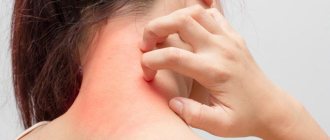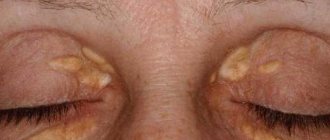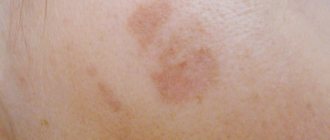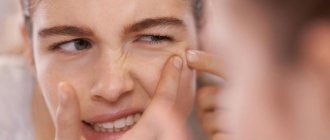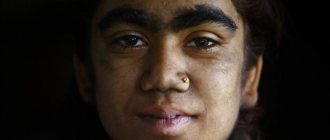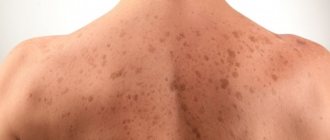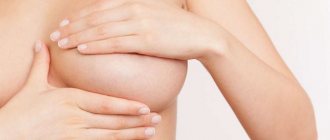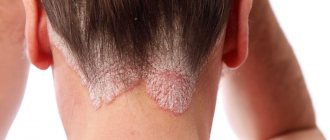At first glance, an ingrown toenail does not pose a serious health hazard, but this is a misleading opinion. The disease (onychocryptosis) threatens with severe complications, including amputation.
A person not only loses a normal standard of living, constantly experiencing pain when walking, but is also exposed to infection through the affected area.
How the problem starts
More often, the big toe suffers; the nail begins to grow into the soft tissues near the nail fold.
In this case, the damaged area becomes sensitive, swollen, redness appears, and over time, pus and ichor appear.
Deposits in the form of a red granulation tissue layer are observed on the finger. With inadequate treatment, it becomes denser, disfiguring the phalanx and changing its structure.
Causes
People often think that ingrown toenails are caused by improper trimming. However, experts also identify additional factors that may contribute to the development of this pathology. The most common reasons include the following:
- Tight shoes. Wearing uncomfortable shoes is accompanied by squeezing of the toes, which is why the plate constantly puts pressure on the nail fold. Microtraumas form at this site, which then turn into small ulcers. Gradually, granulation tissue increases.
- Heredity. If a person’s nail shape is irregular from birth, this contributes to ingrown nails. Flat feet is also one of the negative factors that causes pathology.
- Fungal infections. The fungus negatively affects the condition of the nail, making it denser. Often the plate becomes deformed, which leads to it growing into the skin.
- Injury. Ingrowth can occur as a result of a blow to the fingers while walking or when a heavy object falls on them.
- Physiological characteristics of the body. If a person's nails are rounded, the underlying bone is very curved, or there is a high level of peeling of the outer layer of skin, this can lead to plate problems.
In the first stages, the pathology can be effectively eliminated at home. This type of treatment is also carried out in cases where the nail grows shallowly, and pain occurs only when pressing on the tip of the finger.
Why do unwanted manifestations happen?
Doctors have identified the causes of the disease:
- Sloppy pedicure. The corners are cut incorrectly - the edges should not be rounded or cut too short.
- Narrow shoes that force the sharp end to press into the skin.
- Finger wounds or injuries.
- A fungus that causes nails to peel off.
- Orthopedic malformation of the foot, including deformation of the big toe.
- Lack of proper hygiene. You should wash your limbs every day, changing socks.
- Genetic predisposition.
In addition to these factors, trouble is caused by flat feet, chemotherapy, diabetes, hyperhidrosis (excessive sweating), and obesity.
Symptoms
Problems are indicated by:
- pain that worsens when wearing shoes;
- redness, swelling, pulsation, purulent discharge, indicating infection;
- presence of ulcers;
- increased growth of tissue around the nail, similar to wild meat;
- The late stage is characterized by a change in the shape of the plate, its compaction, and coarsening of the soft tissues.
When to Seek Medical Help
Specialized medical care should be sought at the first symptoms or in the following cases:
- lack of effectiveness from home procedures using folk remedies,
- pathological growth in the form of a tube with inconvenience when walking and wearing shoes, as well as infection and pain,
- emergency cases
: diabetes mellitus, endocrine diseases, tuberculosis, mechanical injuries, cancer, trophic ulcers, HIV infections, pregnancy, lactation, etc. - complications with fungal infection or with age-related or pathological hyperkeratosis.
Help yourself
Do not think that the issue will be resolved on its own. With inactivity, the indicators will increase, and the pain will bother you even in the absence of movement. What to do if a nail grows on your foot?
The initial level involves careful care of the affected area. Warm baths, several times a day, with the addition of salt, soap, and antibacterial agents will be beneficial.
After this, try to slip a gauze flagellum soaked in chlorhexidine and myrogen under the ingrown part of the nail. They change it daily, trying to move it lower.
At the initial stage, try exposure to boiling water. The finger is dipped into a container of hot water for two seconds and quickly returned back. Repeat 15 times.
We recommend reading:
Cuticle removal - tips on choosing products and an overview of the best removal methods. 130 photos and videos of cuticle careHow to restore nails after gel polish - a review of the best means and methods of restoration at home (120 photos + video master class)
Magnet for a cat's eye: tips on how to apply iridescence simply and beautifully with your own hands (110 photos + video)
There is another method that advises what you can do yourself if the nail has grown into the skin.
In the middle, a groove is cut with an ordinary nail file that does not affect the nail bed. It will help tighten the corners, as a result of which the correct growth of the plate will be normalized.
Traditional medicine methods
If you need to quickly relieve pain, you can resort to folk remedies.
Baths
You can soften the nail on your big toe using baths with various products:
- Soda baths. For 3 liters of warm water take 2 tbsp. l. soda The feet are immersed in this solution for 20 minutes. With its help you can relieve pain and reduce inflammation.
- Remedy with chamomile. Add 6 tbsp to 1 liter of hot water. l. dry pharmaceutical chamomile. The infusion is left for 20 minutes, after which it is filtered. Then pour the resulting liquid into 1 liter of clean hot water. Take 20-25 minutes.
- Bath with castor oil and salt. You need to take 2.5-3 liters of water, dissolve 1 tbsp in it. l. salt, then pour 100 ml of castor oil into it. Keep your feet in this solution for 20 minutes.
- Product with potassium permanganate. The solution should be light pink. Baths are done at least 3 times a day. Keep your feet in the water for no longer than 15 minutes. With their help, you can disinfect the affected areas, reducing the risk of suppuration. In addition, a liquid with added potassium permanganate will make the nail softer.
If you can steam your nails well, it will be easier to remove deformed areas of the nail.
Applications and compresses
To get rid of pain, you can use bandages with specially applied products on them. Thanks to this, it will be possible to prevent the entry or development of infection, free the tip of the nail and remove it.
Applications are made with the following plants:
- Aloe. You need to cut off a fresh leaf, pour hot water over it, and then cut it. The pulp is applied to the abscessing finger and secured with a bandage. This compress is best done at night. In the morning the bandage is removed.
- Tea mushroom. You need to divide the mushroom into layers, after which one of the layers is applied to the nail. A film is carefully placed on top, after which a bandage is applied. Apply before bedtime for 3 days in a row.
- Plantain and sea buckthorn oil. After taking a softening bath, smear the damaged area with a small amount, wrap your finger in plantain and secure it with a bandage. This remedy will relieve swelling and swelling from the periungual fold.
After a foot bath with the addition of a decoction of chamomile and calendula, carefully lift the nail and place a cotton wool tourniquet soaked in sea buckthorn oil under it.
How is the treatment carried out?
What should you do if your ingrown toenail hurts? The initial remedy is gluing a specific plate, which, by moving the edges apart, gives the nail a flat appearance, preventing further progress of the disease. You can apply varnish to such a surface, and wearing shoes will not cause suffering.
A mild degree can be stopped by resorting to hardware medical pedicure. The process does not require soaking your feet and eliminates sharp objects.
The treatment is carried out using grinding rollers and stops the ingrowth. Cream Stellanin, Nogtinorm, Uroderm will help reduce inflammation and pain.
Surgical techniques
If conventional treatment methods do not help and the nail cannot be removed, another method is used (invasive intervention): under anesthesia, a part of the plate of the ingrown nail is cut out, under which a miniature tube is placed, designed to protect the roller and prevent the nail from growing into it. This therapy can help alleviate the situation with an ingrown toenail for a while, but the likelihood that an ingrown toenail will occur again is very high, since the basis of the ingrown nail in this case does not disappear.
In the second and third stages, surgical intervention is necessary, since in this case the disease is advanced. For the first time, such an operation was performed about a century ago, and currently, surgical specialists can boast of 75 surgical techniques for removing ingrown toenails. In the Russian capitals of St. Petersburg and Moscow, surgeons can offer the most effective methods for treating ingrown toenails. But, despite this, most of them do not save you from this problem and it often happens that the nail grows back. The operation to remove a foreign body, just like other operations, is carried out with the greatest possible comfort and professional competence in order to achieve the best results in treatment.
Surgery is usually performed on an outpatient basis, and the patient does not need to go to the hospital. This procedure is performed under local anesthesia, the effect of which usually lasts half an hour, but in some cases more complex procedures may be necessary, and they can last even longer.
After special treatment, the couch on which the operation will take place is covered with special sterile linen, after which local anesthesia is performed. There are a large number of different anesthesia that are used during this operation, but the best and most effective is conduction anesthesia. The patient is given an injection in the toe where the ingrown toenail was removed. Next, a cut is made on the nail plate with a laser or scalpel, and then the main component of the ingrown nail is removed.
What you need to know about operations - here
Surgical technique according to Schmieden
Types of operations for onychocryptosis can be different. Often, for this disease, surgeons resort to Schmieden's operation. A characteristic feature is that during its implementation, almost all factors provoking the occurrence of pathology are affected.
More details - here
Cauterization with laser
The high-tech procedure takes place under local anesthesia.
Using a laser beam, the surgeon burns out small depressions in the problem area, through which the nail plate is exposed, destroying growth cells and stopping inflammation. This stops the growth of the traumatic area and causes stable remission.
Removal by radio waves
A gentle technique removes the ingrown part of the nail, including the nearby area, and also cleans the growth zone. After the manipulation, there are no scars or stitches.
When an ingrown toenail begins to fester, the first thing to do is immediately go to a surgeon or orthopedist.
You will need to take a blood test to understand the stage of the inflammatory process, ruling out diabetes mellitus. An x-ray will be needed to provide the specialist with information about the source of suppuration.
The most effective and modern way out in this situation is to turn to radio waves and lasers. Their advantages:
- the risk of relapse is excluded;
- the recovery period is short;
- nail removal is accompanied by disinfection;
- no blood is lost.
The fact that a person experiences painful discomfort is not so bad. But ignoring the symptoms, it provokes dangerous complications such as purulent abscess, gangrene, osteomyelitis. Therefore, take care of your feet and do not put off visiting a doctor.
Symptoms and clinical picture
The complex of symptoms includes redness (hyperemia) of the perioral region.
An inflammatory shaft forms around the nail.
A throbbing and cutting pain is felt, which intensifies during infection or suppuration. The toes become swollen, and putting on shoes becomes problematic due to pain and swelling.
The general condition of the patient depends on the degree (stage) of the lesion.
The second stage of the inflammatory-purulent process causes low-grade fever. Unbearable pain leads to sleepless nights, the patient becomes very nervous. Every touch of the sore finger brings suffering, even to the point of tears and hysteria.
During drainage of pus, the pain subsides and the general condition returns to normal. Serous-purulent contents flow out of the wound. The wound granulates and the healing phase begins.
At first glance, the disease seems insignificant and frivolous, but it is not so. This picture is more often observed after improper execution of a manicure, pedicure or after a mechanical injury to the fingers.
Chronic illness is more severe.
Its signs
: constant relapses with the release of purulent-inflammatory exudate and increased pain. Such symptoms are observed in diabetes mellitus and diseases associated with pathologies of peripheral blood supply and metabolic disorders.
Attention!
Patients with diabetes mellitus and trophic disorders of the lower extremities at the first symptoms should definitely seek medical help, otherwise they are fraught with complications - gangrene!
Stages of the disease
Onychocryptosis
most often develops on the big toes of the lower extremities. As the nail grows into the soft tissue of the finger and the depth of the lesion, the stage of the disease depends.
Onychocryptosis has three stages of development:
- Stage I: hyperemia, swelling, throbbing pain in the finger in the area of the nail fold,
- Stage II: cutting into soft tissue forms a wound, which becomes infected with coccal, fungal or mixed flora, followed by the formation of pus and its drainage,
- Stage III: after drainage, the wound is covered with granulation tissue, the inflammatory process subsides and recovery occurs, and in case of further ingrowth, the disease becomes chronic. Recovery in this case is imaginary, since relapse occurs very quickly.
In patients with diabetes mellitus and trophic ulcers, all stages occur transiently, therefore, in order to prevent irreversible processes, it is necessary to seek specialized help at the first symptoms: pain in the big toe.
Photo tips on what to do if a nail grows in
Please repost
0

